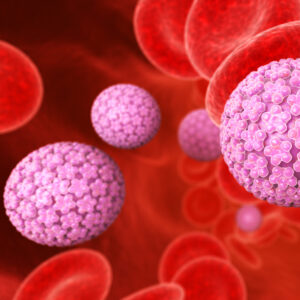Thalassemia
Thalassemia is a group of inherited blood disorders characterized by reduced or absent production of hemoglobin, the protein in red blood cells that carries oxygen throughout the body. This leads to anemia and can cause various health complications. Thalassemia is classified mainly into two types based on which part of the hemoglobin molecule is affected: alpha-thalassemia and beta-thalassemia.
Types
- Alpha-Thalassemia:
- Caused by mutations affecting the alpha-globin genes, leading to decreased alpha-globin chain production.
- Severity depends on how many alpha genes are affected:
- Silent Carrier: One gene affected, usually asymptomatic.
- Alpha Thalassemia Trait (Minor): Two genes affected; mild anemia may be present.
- Hemoglobin H Disease: Three genes affected; moderate to severe anemia with potential complications.
- Alpha Thalassemia Major (Hydrops Fetalis): All four genes affected; typically fatal before or shortly after birth.
- Beta-Thalassemia:
- Caused by mutations affecting the beta-globin genes, leading to decreased beta-globin chain production.
- Also categorized by severity:
- Beta Thalassemia Minor (Trait): One gene mutated; often asymptomatic or with mild anemia.
- Beta Thalassemia Intermedia: Both genes mutated but still producing some functional beta chains; moderate anemia and fewer complications than major forms.
- Beta Thalassemia Major (Cooley’s Anemia): Both genes severely mutated; significant anemia requiring regular blood transfusions.
Symptoms
Symptoms can vary based on type and severity but commonly include:
- Fatigue
- Weakness
- Pale skin
- Jaundice (yellowing of skin and eyes)
- Dark urine
- Growth delays in children
- Bone deformities due to expanded marrow space from increased erythropoiesis
Diagnosis
Diagnosis involves several steps:
- Blood Tests:
- Complete Blood Count (CBC) showing low hemoglobin levels and microcytic red blood cells.
- Hemoglobin electrophoresis identifies different types of hemoglobins present in the blood.
- Genetic Testing:
- To confirm mutations in globin gene(s) responsible for thalassemias.
- Family History Assessment:
- Since thalasemmias are inherited disorders, understanding family history can aid diagnosis.
Treatment Options
Treatment varies depending on type and severity:
- Supportive Care:
- Regular monitoring for signs of complications such as iron overload due to frequent transfusions.
- Transfusions:
- Regular red blood cell transfusions for those with moderate to severe disease help maintain adequate hemoglobin levels but increase risk for iron overload over time.
- Iron Chelation Therapy:
- In patients receiving frequent transfusions, medications like deferasirox or desferrioxamine help remove excess iron from the body.
- Folic Acid Supplements:
- May be recommended as folate deficiency can worsen anemia.
- Bone Marrow/Stem Cell Transplantation:
- The only potential cure for some patients with severe forms like Beta-Thalasemia Major—requires a compatible donor.
6 .Gene Therapy:
- Emerging treatments aiming at modifying genetic defects associated with thalasemmias show promise as experimental options.
Conclusion
Thalessemias are complex genetic disorders that require careful diagnosis and individualized management strategies based on patient needs while considering potential advancements in treatment approaches through ongoing research efforts aimed toward improving outcomes within this patient population.. Regular follow-up care involving hematologists is crucial for optimal management over time.-
If you have specific questions about any cancer treatment, its management, or anything related, feel free to ask! We will be pleased to help you with our wide hospital & clinic network all over the Turkiye.

